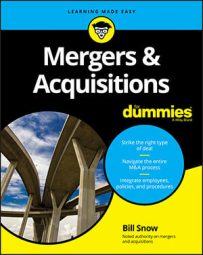The most obvious source of capital for an M&A deal is for Buyer to use his own money. The benefits are obvious: a Buyer using his own money has total control over the situation. A third-party lender usually institutes hoops for the Buyer to jump through; using his own money removes those external limitations.
The downside is that money isn’t a bottomless pit, and a company putting money into an illiquid asset such as an acquisition ties up that capital such that the money can’t go toward other important expenses such as payroll and other operating expenses.
Using his own capital to finance 100 percent of an acquisition also means the Buyer is assuming 100 percent of the risk. Bringing in outside capital helps Buyer spread the risk.
Many Sellers incorrectly assume that Buyers are using their own money, and worse, that Buyers have an endless stream of money they’re willing and happy to throw around with little or no planning. Mentally spending someone else’s money like this is one of the biggest errors anyone can make.
Being carefree with someone else’s wallet is easy, but think about how you’d feel if someone told you, “You have money; just pay more.”

